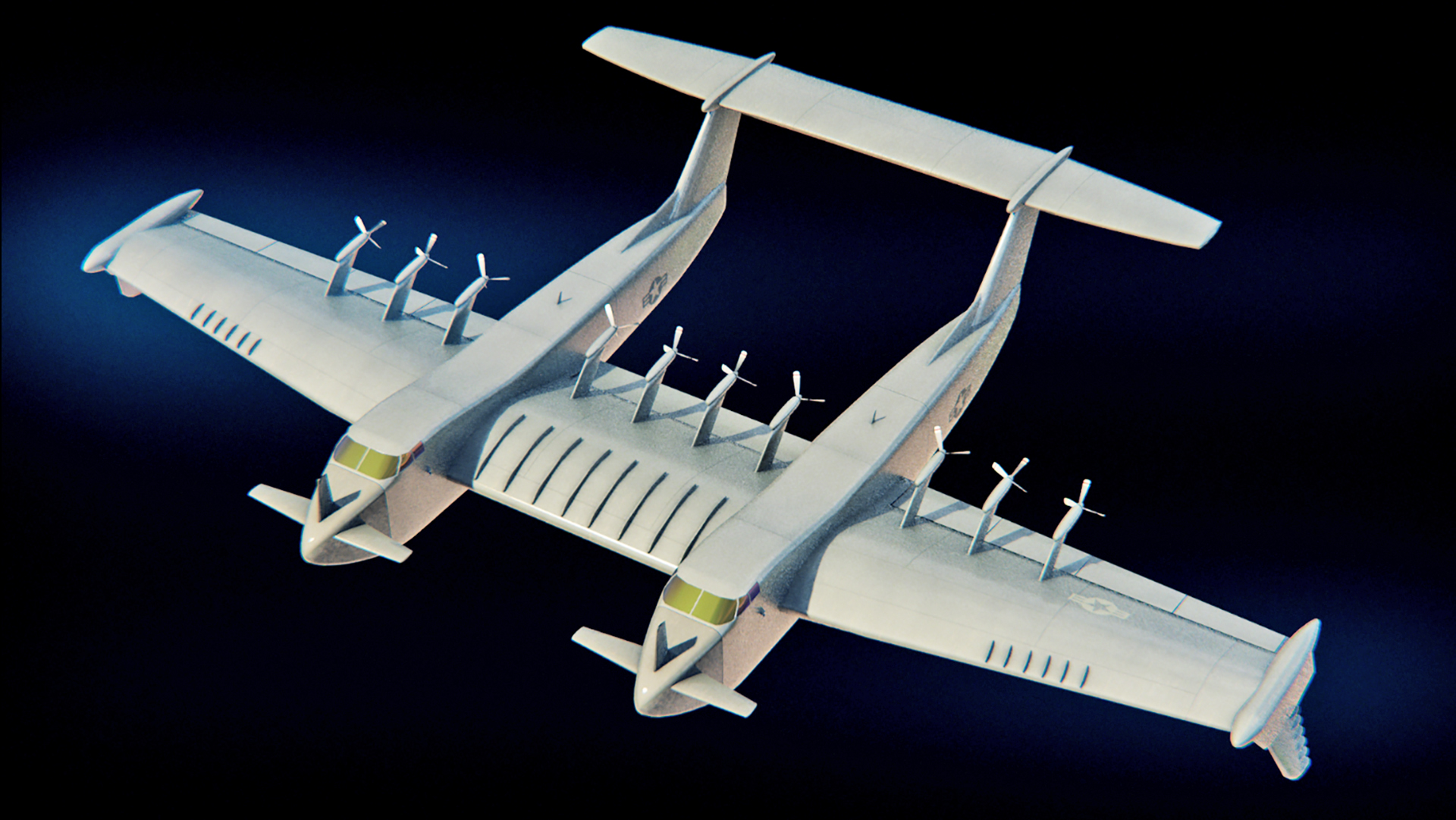The Pentagon’s latest vision for a flying transport that is able to operate from water employs the ekranoplan, or wing-in-ground (WIG) effect principle, as used by a class of vehicle that sits somewhere between a boat and a plane. Designed to glide at high speed over the surface of the water, by making use of ground effect, ekranoplans have so far found only very limited military usage, notably in the former Soviet Union, and it would mark a truly innovative departure if adopted by the U.S. armed forces.
The Defense Advanced Research Projects Agency, or DARPA, has launched its Liberty Lifter project that aims to create a long-range, low-cost X-plane using the ekranoplan concept. The agency wants the craft to demonstrate seaborne strategic and tactical lift and says that the project should “demonstrate a leap in operational logistics capabilities.”

In a media release, DARPA explains: “The envisioned plane will combine fast and flexible strategic lift of very large, heavy loads with the ability to take off/land in water. Its structure will enable both highly controlled flight close to turbulent water surfaces and sustained flight at mid-altitudes. In addition, the plane will be built with a low-cost design and construction philosophy.”
Currently, the program is in its initial phase, which involves defining “the unique seaplane’s range, payloads, and other parameters,” according to Alexander Walan, a program manager in DARPA’s Tactical Technology Office.
However, Walan also speak confidently of the program’s goal to “showcase an X-plane demonstrator that offers warfighters new capabilities during extended maritime operations.”
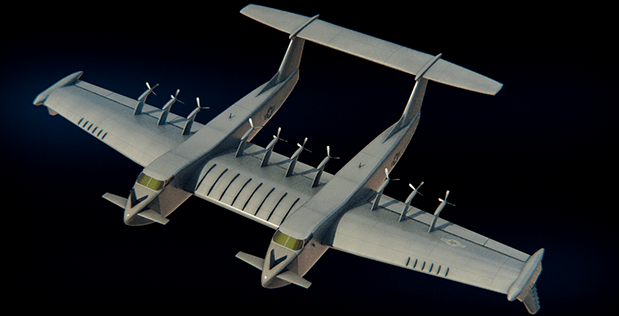
Concept art and an accompanying video might give an idea of what such an X-plane could look like, although a test asset is likely to be considerably smaller than the twin-fuselage cargo-carrier depicted in the concepts.
This design uses a straight wing, apparently equipped with various high-life devices, to marry two box-like fuselages, each of which appears to have a cockpit, and which have small canard foreplanes; one version also features a vertical fin on each nose, the purpose of which is not immediately clear. The powerplant is depicted as ten propeller units mounted along the wing, although there is no indication as to whether or not these use a common powerplant or powerplants. Furthermore, one concept shows these propellers in a pusher configuration, while another has them facing forwards. Each fuselage carries a slightly swept tail fin with a slab-like horizontal stabilizer mounted on top.
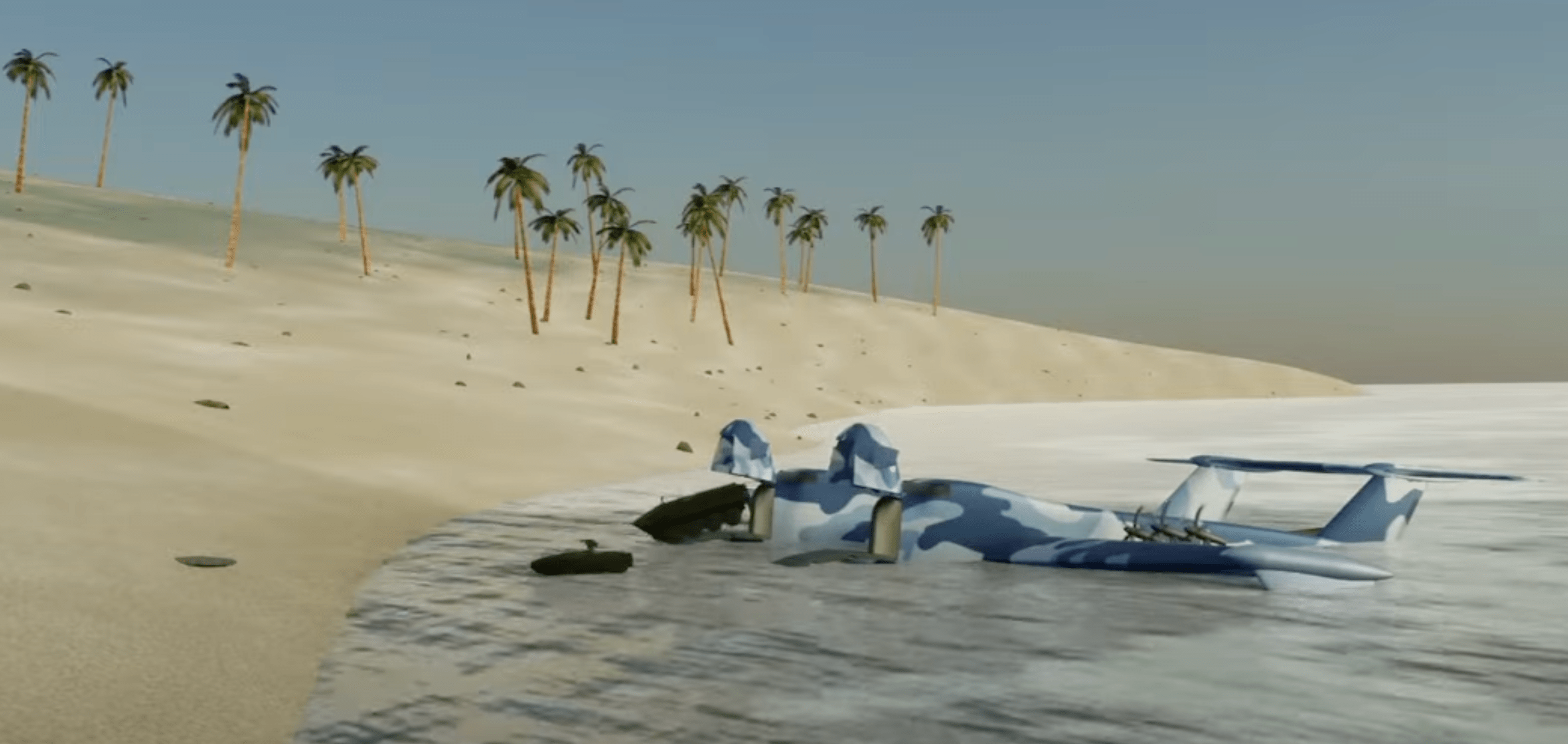
One important aspect that is evident in the video is the cargo unloading process which is achieved by an upward-opening nose door, allowing vehicles to be driven straight up onto the beach from the water’s edge.
The fact that the Liberty Lifter should be able to operate not only by skimming over the surface of the water, but also at “mid-altitudes,” of up to 10,000 feet, indicates that the craft will actually be a hybrid, combining the key advantages of an ekranoplan with the superior performance attributes and flexibility of a conventional fixed-winged aircraft.
By skimming over the water, a suitably sized ekranoplan can typically move loads quickly and efficiently. However, its low-level flight profile and limited maneuverability puts it at risk of damage by collisions with a whole range of surface objects. According to DARPA, a true ekranoplan can be defined by the fact that it flies less than the length of its wingspan above water (or, less frequently, over land).
Video of the Soviet Lun class ekranoplan:

Like an ekranoplan, the Liberty Lifter concept is still able to operate independent of runways and move low over water when required but can then ‘flex’ to the kind of higher-altitude, more agile flight that would be required to avoid larger obstacles as well being able to move loads even faster and more efficiently over greater distances.
With normal ekranoplans, operations are also hampered by high waves. Takeoff is limited to calmer waters, a drawback shared with traditional floatplanes and amphibians, too.
One of the main challenges DARPA says it will address in the Liberty Lifter program is how to operate in turbulent sea states “by creating high-lift abilities at low speeds to reduce wave impact load during takeoff/landing, and innovative design solutions to absorb wave forces.”
“Advanced sensors and control schemes” will be developed to avoid large waves and to handle aero/hydrodynamic interactions during the takeoff and landing procedures.
This meshing of different technologies is also mirrored in the fact that DARPA sees the Liberty Lifter as expanding not only upon existing transport aircraft but also cargo vessels. Unlike a traditional airlifter, however, the Liberty Lifter will be able to take off and land from water. In contrast to a cargo vessel, meanwhile, the Liberty Lifter will use its ekranoplan operating mode to move payloads around much faster and with greater survivability.
As DARPA notes, “current sealift is very efficient in transporting large amounts of payload [but] it is vulnerable to threats, requires functional ports, and results in long transit times.” While the U.S. Air Force’s fleet of airlifters can transport their cargoes much more quickly, it has the obvious drawback of being tied, more often than not, to long runways that are also highly vulnerable. A standard airlifter is also less able to support maritime operations of the kind that the Pentagon is increasingly pivoting toward.

Not only will the Liberty Lifter be runway-independent, but it’s planned to have a much-reduced requirement for land-based maintenance, being able “to operate at sea for weeks at a time.”
All this thinking is clearly based on the potential for a future conflict with China in the Asia Pacific region. Here, likely contingencies would be dominated by the maritime environment, would involve moving cargoes and personnel over huge distances, and would see conventional airfields threatened from the outset by China’s powerful long-range strike assets.
These concerns have led to significant shifts in the way the entire U.S. military expects it may have to fight in the future and aerial transport, especially in the maritime domains of the Asia Pacific, has been a part of this new thinking.
In recent months, we have seen U.S. Special Operations Command (SOCOM) announce the MC-130J Amphibious Capability, or MAC, essentially an amphibious C-130 Hercules variant to operate from littoral areas in support of special operations forces. This kind of transport would answer some of the same questions as the Liberty Lifter, but DARPA is clearly thinking already about more radical approaches to meeting this broad requirement.
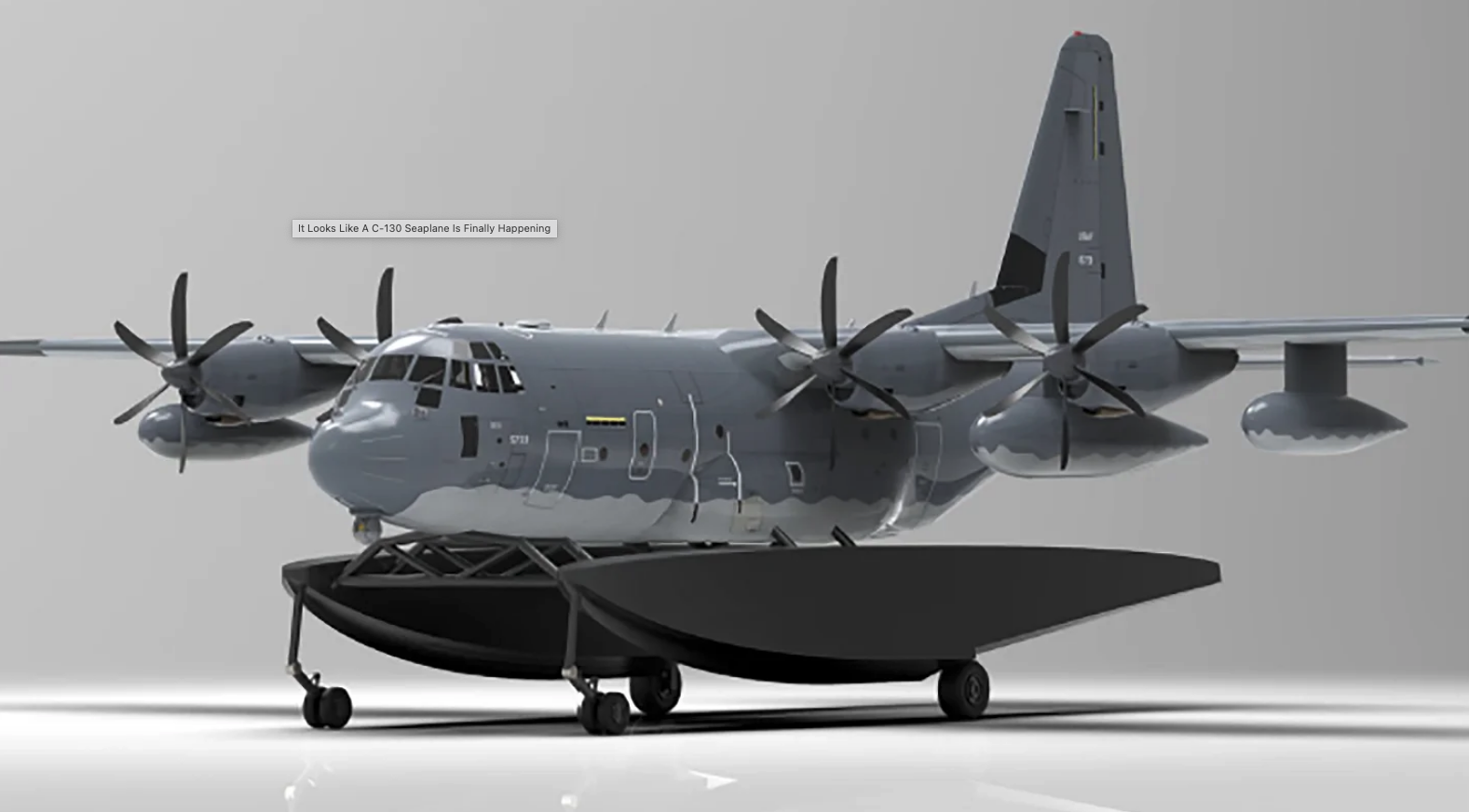
While there has been no official interest shown in an acquisition of the Japanese ShinMaywa US-2 amphibious aircraft, it’s also notable that the U.S. Air Force has trained alongside this impressive machine during the latest iteration of the Cope North exercise in the Asia Pacific region. The US-2 remains one of the very few amphibians in military service today and would be similarly well suited to special operations missions in littoral areas.
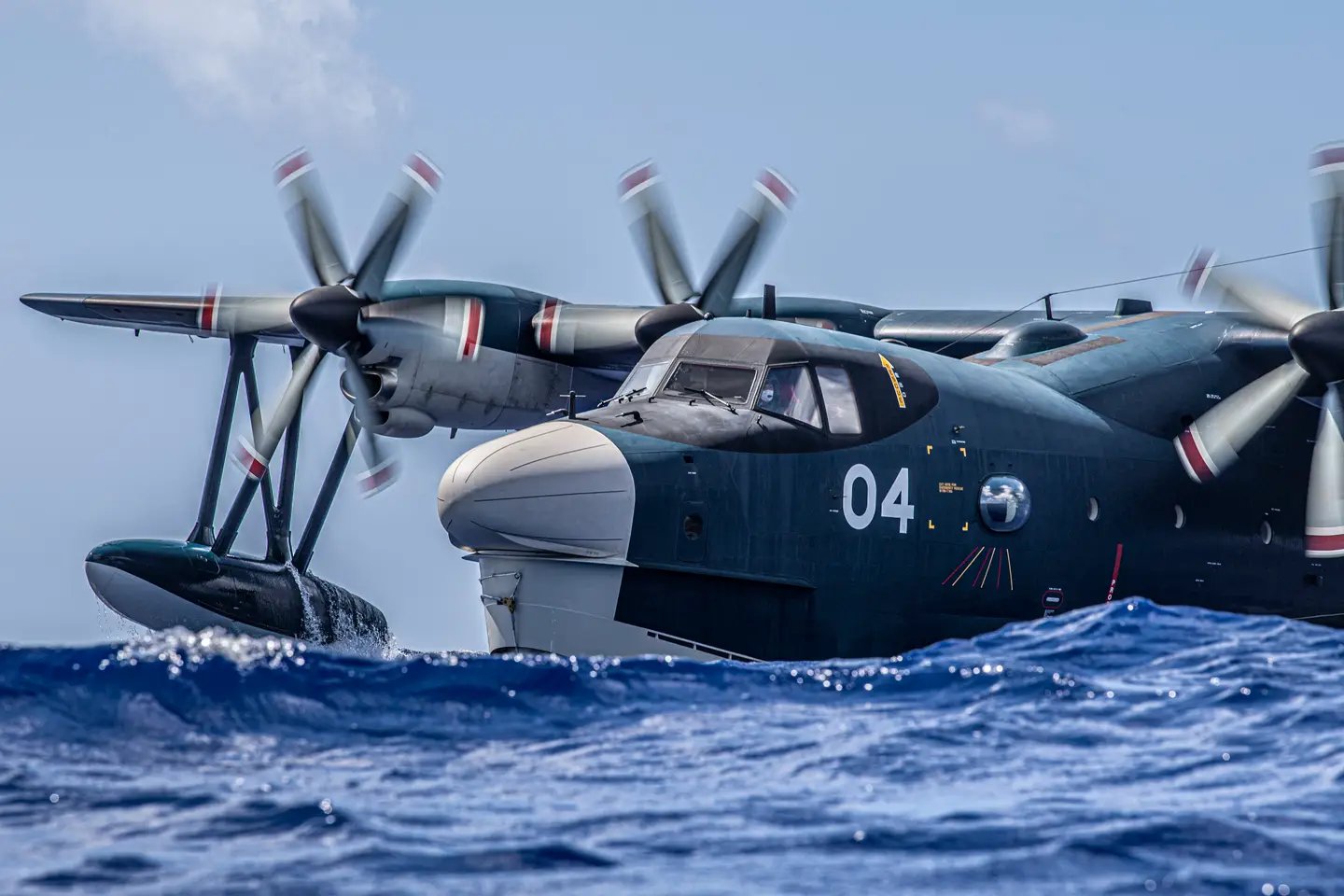
If, in the future, the Liberty Lifter project does lead to some kind of production aircraft, DARPA says that it will “prioritize low-cost, easy-to-fabricate designs over exquisite, low-weight concepts.” Using more affordable materials should mean that such an aircraft can be purchased “in large quantities.”
At this stage, it will likely be a good few years, if at all, before we see an aircraft derived from the Liberty Lifter taking part in Cope North or similar.
However, the fact that DARPA is now looking at rethinking the entire concept of aerial lift in a maritime environment shows just how seriously the Pentagon is now taking the demands of a future conflict with a peer adversary in the Asia Pacific region.
Contact the author: thomas@thedrive.com
